When and where was miso soup invited? What is it made of? Why is it so important to the Japanese people? Is there a correct way to eat it? Is it really good for your health? Here are some answers to the most commonly asked questions related to the most famous soup of Japanese cuisine.
The Role of Miso Soup in Ichiju-issai, the Japanese Balanced Diet
Ichiju-issai is a Japanese term that was born during the Kamakura period (1185-1333) to describe the minimum balanced meal in Japanese food culture. It includes rice (which is considered the base of the meal), a bowl of miso soup, and a side dish. However, pickled vegetables are often implicitly added.
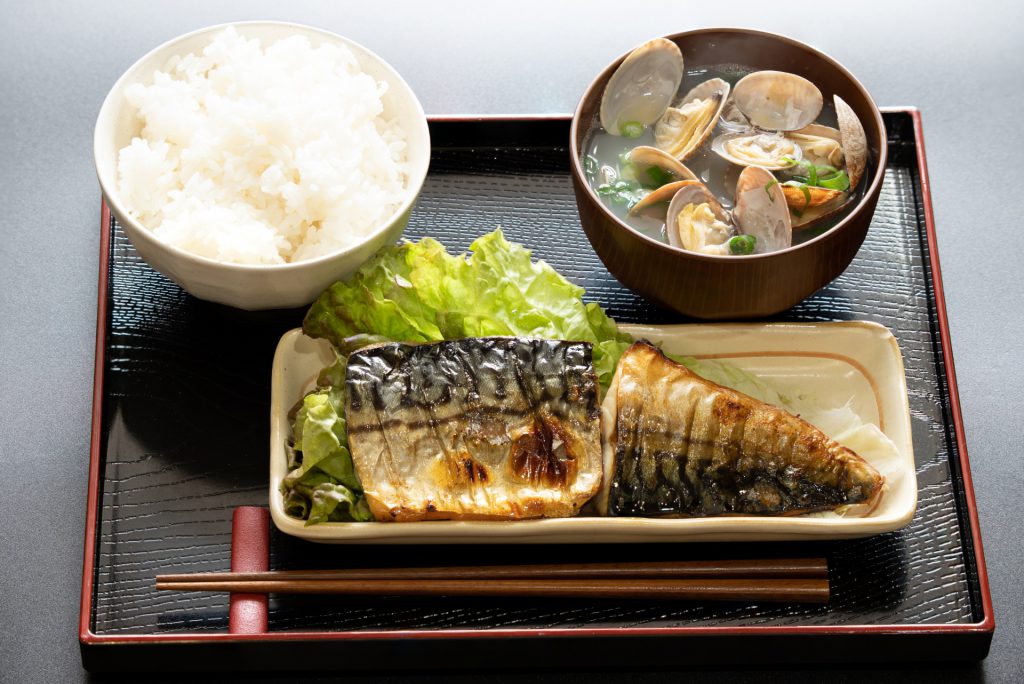
Nowadays, a balanced meal is more likely referred to as ichiju-sansai, which means that there is not one but three side dishes (often fish or meat in one dish and vegetables in the two others). Most home-cooked meals are based on this model. Japan is often perceived as being a rice-eating country, but miso soup is equally important on the Japanese table.
The Origins of Miso Soup
Let’s have a quick look at the history of miso soup.
During the Asuka period (592 – 710) China introduced to Japan a food called hishio, something made of soybeans and salt. Later, the Japanese made it into a paste form: miso was born. At the time and until the Heian period (794 – 1185), miso paste was not yet used in soup, but was eaten much like a popsicle!
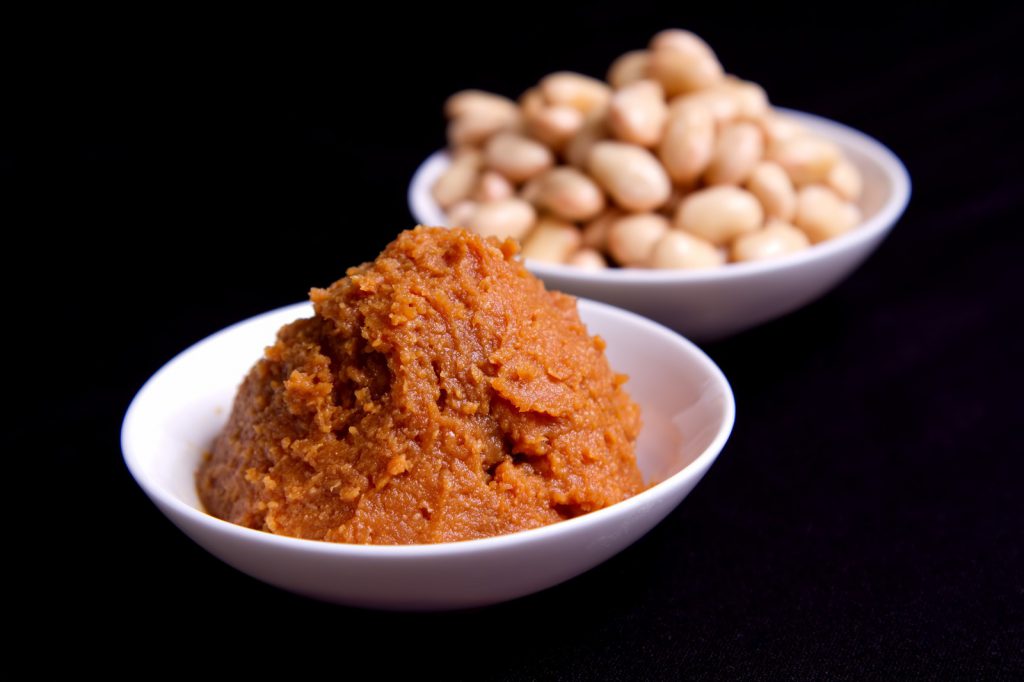
The ichiju-issai style of preparing food became common among the samurai society during the Kamakura period (1185 – 1333), giving birth to the custom of serving miso soup with everyday meals.
During the age of civil wars in Japan, miso soup was used by military commanders as a field ration. There was even an ancestor to today’s instant miso soup, which was prepared by simmering the stem of a taro[1] root with miso and then drying it out. Soldiers chopped it and put it in hot water to transform it into miso soup.
What’s Inside Miso Soup Nowadays?
Common ingredients in miso soup are usually tofu, wakame seaweed, Japanese radishes, potatoes, and the actual miso paste.
Miso soup does not only include miso paste, but also dashi (a soup stock that can be made from bonito or kombu seaweed), which is prepared before adding the miso paste. This is the key to cooking a good miso soup. The perfect miso soup includes a perfect harmony between the dashi, the miso paste, and the other ingredients.
For busy people though, it is also possible to buy instant miso soup, and even freeze-dried miso soup in most Japanese supermarkets and convenience stores.
How to Eat Miso Soup
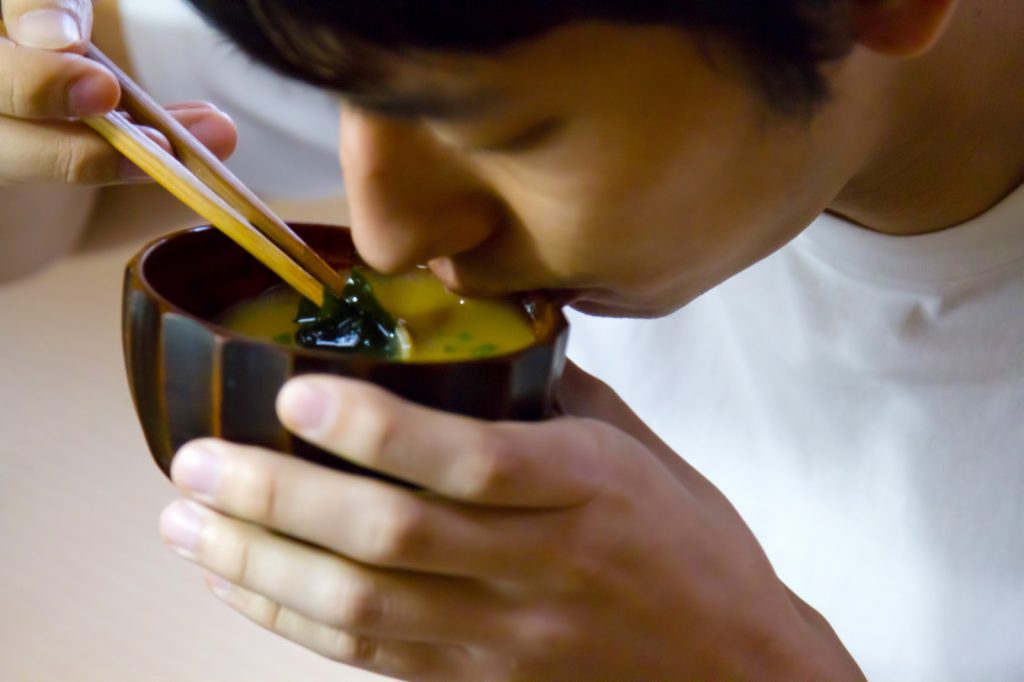
Unlike most western soups, miso soup is not to be eaten with a spoon. Here are some simple rules to follow when eating miso soup:
・If your soup comes with a lid, take it and put it next to your bowl, but do not flip it. Even when you have finished drinking the soup and would like to replace the lid, do not flip it.
・You should start by eating a bit of miso soup, then rice, then the side dishes, then back to miso soup, and repeat this until you finish your plates.
・Hold the bowl and bring it to your mouth to eat its contents with your chopsticks (the same applies with rice). When there are no ingredients left but the soup only, hold the bowl in both your hands to drink it. If you are right-handed, put your left hand under the bowl and your right hand on the side of the bowl when you drink.

The Importance of Miso Soup to Japanese People
Miso soup has countless variations, as ingredients reflect the food culture of each area of Japan, and each family has its distinct recipe and way of seasoning!
Here is a short interview of fourJapanese people that reflects these variations and how important miso soup is to them as a cultural product.
Where are you originally from and what did your family miso soup look like?
Ayano: I’m from Chiba prefecture! Our miso soup was very standard and usually included tofu, wakame seaweed, and Japanese radish. Its taste made me feel comfortable, it was kind of reassuring.
Shunsuke: I’m from Sapporo in Hokkaido prefecture. My mother makes her own miso from scratch using soybeans and she sends her home-made miso to me so I still use it. Our miso soup was very simple with mushrooms or wakame seaweed!
Ayane: I’m from Hiroshima prefecture, but my parents come from Nagoya, where people usually use red miso. That’s why my mother used to cook miso soup with the regular white miso or red miso, and she would use a lot of different ingredients that would change every day: mussels, tofu, mushrooms, eggplants, etc.
Yuri: Actually, in my family we did not have miso soup for every dinner. But when my mother made it from time to time, she used an ingredient typical from Fukui prefecture where she was from. It’s called uchimame, and it’s soy beans that have been pressed and dried. I still have some at home because I like their texture once put in hot water. Except that, my mother used white miso and would add deep fried tofu, tofu or wakame seaweed. I like miso soup with onions for a sweeter taste!
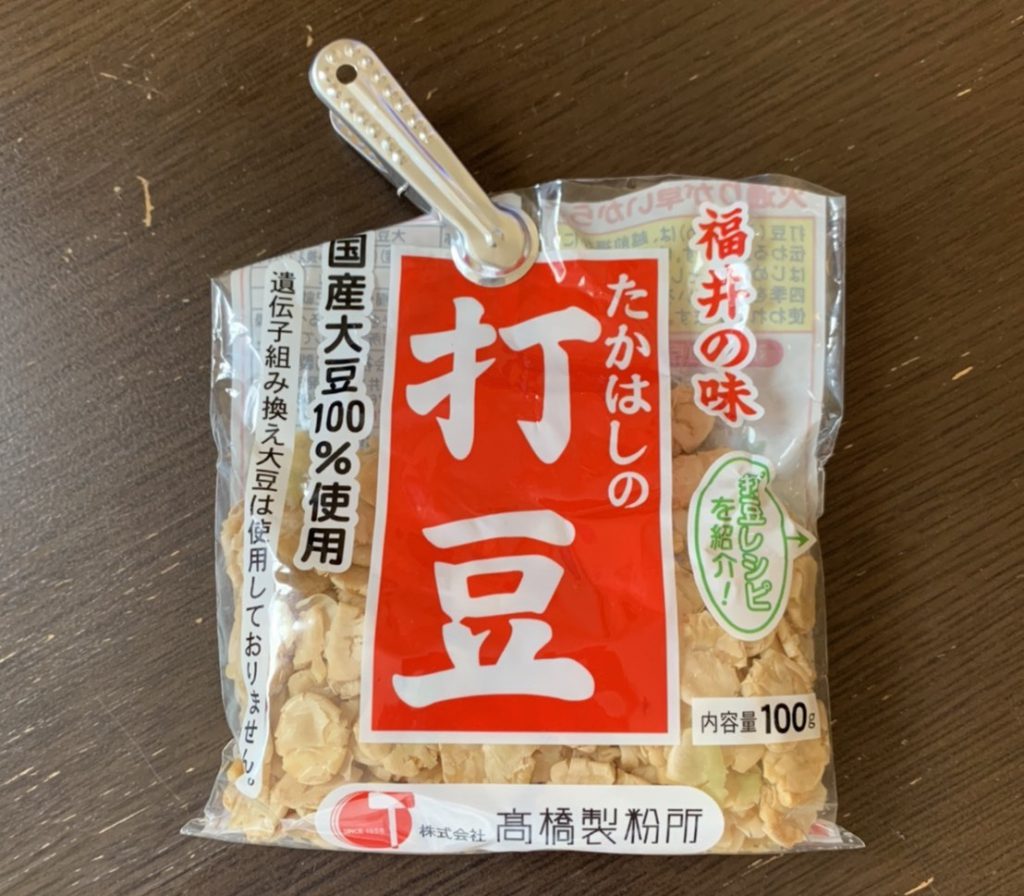
How do you feel when you drink miso soup?
Ayano: I feel like I’m doing something good for my body [laughs]! It’s like I’m fixing my body health from the inside.
Shunsuke: It feels like… [long sigh of relief]
Ayano: I feel reassured! I believe rice and miso soup make the perfect combination.
Yuri: I feel calm and relaxed, like in a good bath. I often want to drink some miso soup when I’m hungover.
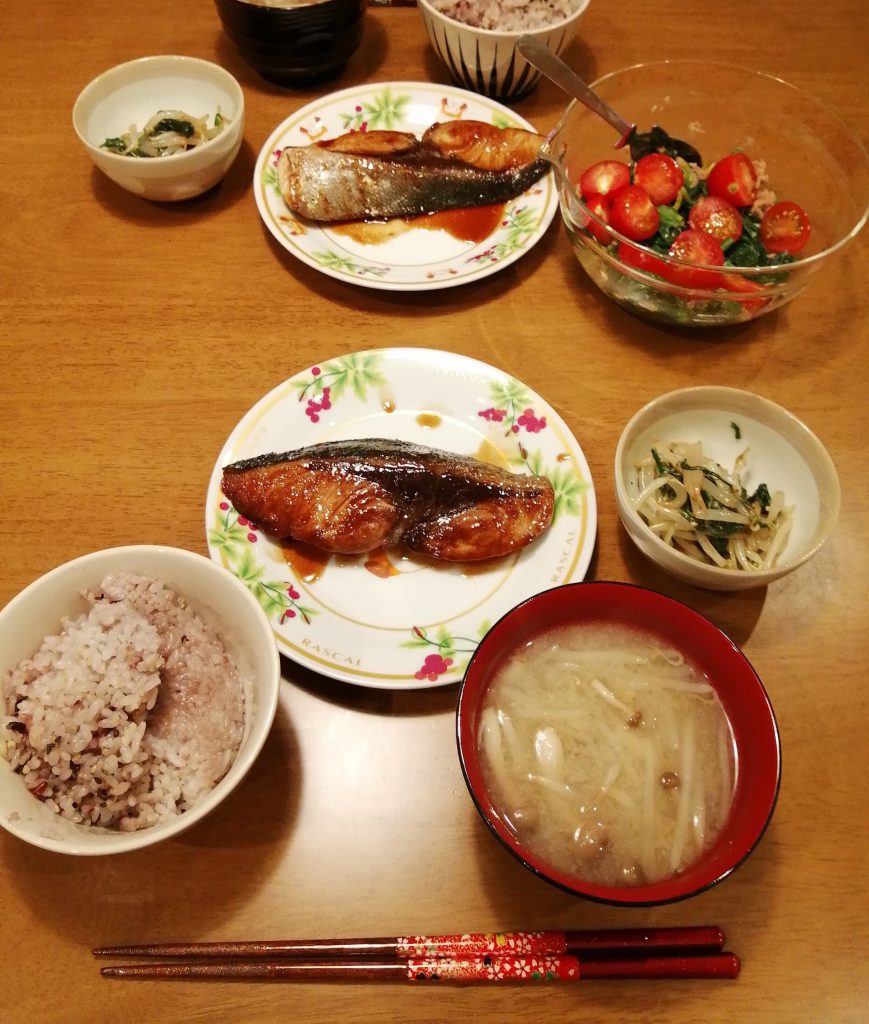
For those of you who studied abroad, did you miss miso soup while you were living in another country?
Ayano: I missed it a lot! I was in Australia and there were many soups like tomato soup or clam chowder, but there was no miso soup in the shops at the time so I used to go to Japanese restaurants.
Shunsuke: When I was studying in Paris, I couldn’t help but want to drink it. Before going to school, I would have a breakfast made of baguette and miso soup. Now that I think about it, it was a terrible combination… I cooked miso soup for my French friends once and they all really liked it a lot.
Ayane: I was in Australia too and I missed it a lot! I would go to supermarkets that sold Japanese food ingredients and make my own miso soup.
Yuri: I’ve never studied abroad but when I have to travel in another country for a long time, I always take some miso soup with me.
What do you think of instant miso soups? Do you use them?
Ayano: I think they’re very practical! It only takes a few seconds to make which is why I often use them during my lunch break at the office. By the way I also often make the instant pork soup from Seven Eleven [laughs]!
Shunsuke: I don’t use them anymore but I think it’s ok to use them when you’re young. Instant soups nowadays taste way better than they used to.
Ayane: The quality of instant miso soup today is high, and I think it’s great you can make a good miso soup in a few seconds with just some hot water. I always have some in my desk at the office, so I can make soup easily when I feel like it.
Yuri: I use them often. I live alone so it’s very handy to have one-serving sized miso soup! The taste is good and it’s well enough! I, too, keep some at the office.
Is Miso Soup Really Good for Your Health?
Miso is made from fermented soybeans, it is full of varied nutrients, and it has mainly two properties: it contains all the amino acids needed by human beings and is therefore a great source of proteins; it is also a source of probiotics, the good bacteria in your digestive system.
According to Healthline, the main benefit of drinking miso soup is improving digestion and preventing bad bacteria to develop in your gut. Drinking miso can help restore your gut balance after having an antibiotic treatment.
Some studies suggest that it may give protection against several cancers such as stomach, lung, colon, and breast cancer. It may also reduce the risks of heart disease or boost the immune system, but further studies are required.
However, you should know that miso also contains a lot of salt and is then not recommended if you need to follow a low salt intake diet. Nowadays Japanese shops often sell a low-salt version of miso paste too.[2]
Why Not Make Your Own?
To conclude, miso soup has been at the heart of Japanese food culture for hundreds of years, and its reputation for being the base of a balanced meal is backed up by data about its nutritive qualities. The Japanese consider it a ‘taste from home’ and tend to miss it when they don’t drink it for some time. Since it has many variations depending on areas of Japan and even of households, why not give a try at making your own version? This recipe from Just One Cookbook has all the necessary information to make excellent homemade miso soup and lots of hints to make variations. If you try it, let us know how it went in the comments!


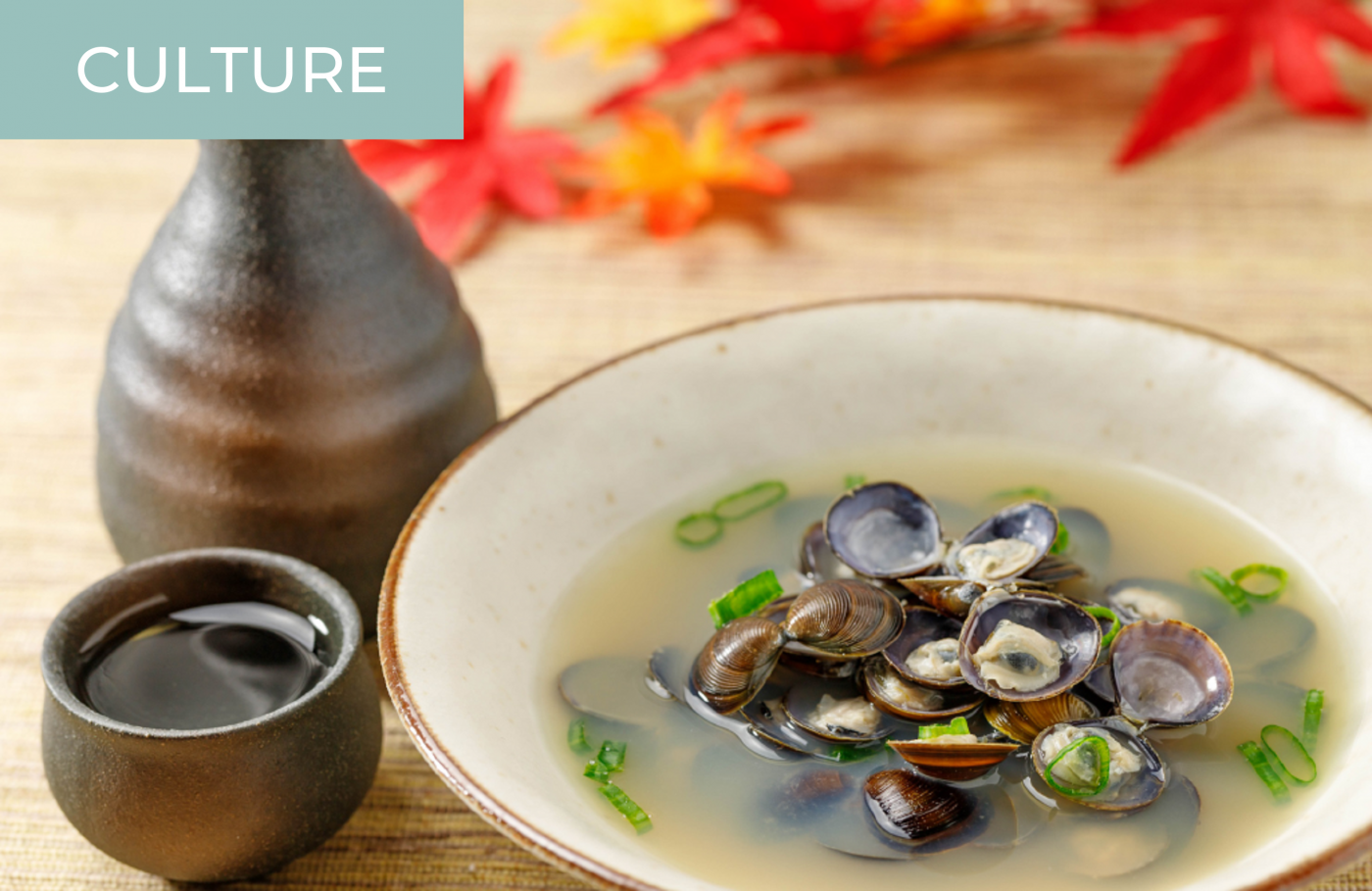


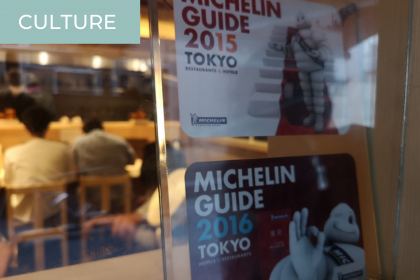
3 Comments
Sally Curlz
October 20, 2021 at 4:47 PMAfter I had tried miso soup for the first time, it was just an instant miso packet and it took minutes to make, I felt like I was given a hug by the soup inside. I wanted to see how others felt about it and that’s how I ended up reading its history here.
Amélie Geeraert
October 20, 2021 at 6:05 PMDear Sally, thank you for your comment! I’m glad you enjoyed your first miso soup. Please do not hesitate to taste and compare different sorts, or even to give it a personal twist by adding your favorite ingredients to it! I hope you enjoyed reading how some Japanese people feel about that soup.
Petr Jůza
September 14, 2023 at 7:18 AMYears ago (about 20), when I was in Japan for the first time, I stayed with one family. We had miso-shiru every single day. I´m from country where we eat soups also very often, but the type and taste differ much more widely. Miso-shiru taste was the same day after day and I was so surpriced that after several weeks and then months I didn´t feel bored of the taste – it really felt reassuring – same way as the Japanese people above said.
Recently I got into making my own miso and enjoy it daily. 🙂
Cheers.